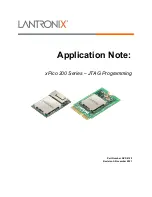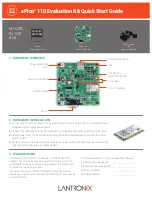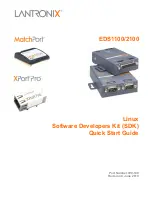
33
Press
ENTER
.
This is the trim controller full scale setting (in terms of mA).
Press the
DOWN ARROW
key or the
UP ARROW
key to adjust the output.
Press
CLEAR
three times. This backs out to the top level of the menu, or you may press the
pH/mV
key to exit the menu.
2.2.4
Recorder 2
The second isolated 4-20 mA output is provided. This output can be selected to be either
a PID controller output or a second recorder output (see INIT SET\OUTPUT 2 in Section
2.2.5 Initial Setup). This menu is the same as the recorder menu (see Section 2.2.2
Recorder Output) except that the mode selection is limited to pH and mV.
2.2.5
Initial Setup
The menu entry contains the temperature compensation (C COMP), SERIAL I/O,
OUTPUT 2, and SIGnal AVeraGing setup sub-menus.
The temperature compensation (C COMP) submenu selects between automatic and
manual temperature compensation. When automatic temperature compensation is
selected, the temperature reading from the temperature sensor built into the probe is used
to calculate the pH reading. When the manual temperature compensation is selected, the
value entered into the temperature setpoint is used to calculate the pH reading.
The solution temperature compensation (SOL TC) submenu allows for the compensation
of pH changes to the solution due to temperature. The default setting of 0 pH/°C has no
effect on the reading. For non-zero entries, the instrument subtracts the entry value times
the number of °C the solution is above 25 °C. For example, if the entry is 0.010 pH/°C and
the temperature is 50 °C, the instrument will subtract 0.25 pH from the reading. When the
entry is a non-zero value, an asterisk (*) will appear in the first display location to indicate
the solution temperature compensation is active.
The SERIAL I/O submenu sets up the RS232 C operation. Refer to SECTION 3 SERIAL
INTERFACE for a full explanation of these settings. OUTPUT 2 selects between a second
recorder output and a PID controller output.
The SIGnal AVeraGe entry changes the signal averaging to provide a more quiet signal
when the sample is erratic. The range of adjustment is 0 (no signal averaging) to 10
seconds signal average.
To check or program the initial setups refer to the following sections.
2.2.5.1
Temperature Compensation Setup
Press
SETUP
to call up the Setup menu:
Press the
DOWN ARROW
key three times to scroll to:
Press
ENTER
to move into the temperature compensation (C COMP) submenu.
Summary of Contents for EC1000
Page 2: ...2...
Page 8: ...8...
Page 12: ...12...
Page 14: ...14...
Page 16: ...16...
Page 18: ...18 Figure 1 Controller Front Panel...
Page 20: ...20 Figure 2 Pump Module...
Page 24: ...24 Figure 6 pH Control Loop...
Page 54: ...54...
Page 56: ...56...
Page 58: ...58 Figure 12 Controller Installation Panel Mount...
Page 61: ...61 Figure 15 Installing the pH ORP Electrode Figure 16 Flow Thru Cell...
Page 70: ...70...
Page 73: ...73 6 4 Calibration See Section 2 3 Calibration Figure 21 Priming Tee Operation...
Page 74: ...74...
Page 80: ...80...
Page 83: ...83 Figure 24 Sensor Replacement...
Page 85: ...85 Figure 25 Hach One pH Process Electrode...
Page 89: ...89 Figure 26 Pump Module Plumbing Diagram...
Page 102: ...102...
Page 103: ......
Page 104: ......
Page 105: ......
Page 106: ......
Page 108: ...108...
Page 112: ...112...
Page 116: ...116...
Page 122: ...122...
Page 123: ...123...
Page 124: ......
















































